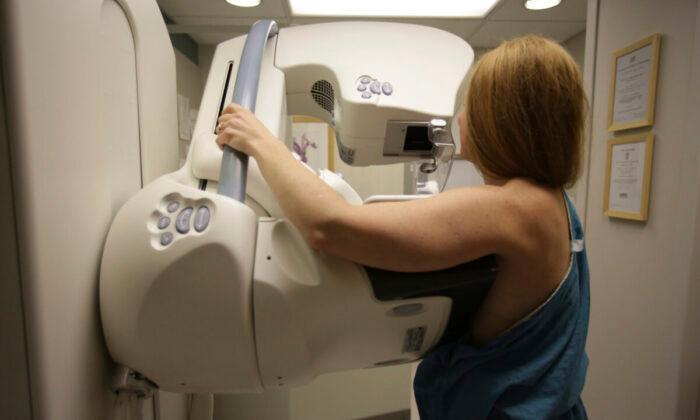While this may sound like good news, the drastic drop in the detection rate between 2020 and pre-COVID years suggest many new cancer cases may have gone undiagnosed rather than the number of cancer incidences actually shrinking.
According to the data, released on May 16, the incidence rate in 2020 was 449.5 new cancer cases per 100,000 people—which is 12.3 percent lower than the average annual rate calculated over the previous five-year period—after age and population changes were adjusted for.
‘Disruptions’
Statistics Canada says the sharp drop in cancer diagnosis is likely due to the “disruptions” caused by pandemic restrictions imposed by all levels of government across the country in 2020.“Screening service disruptions, difficulties accessing primary care services, and fewer in-person appointments due to lockdowns and travel restrictions, all may have impacted the registration of new cancer cases in the Canadian population,” the agency said.
A breakdown by month indicates the likely impact the pandemic measures had on cancer detection.
“In the months that followed the first lockdowns in mid-March 2020, the number of registered cancer cases dropped from 11,510 in March to 8,640 in April and 9,235 in May,” the agency found.
Statistics Canada noted that the incidence rates of the four most commonly diagnosed cancers in Canada—namely breast, lung and bronchus, prostate, and colorectal cancers—all appear “significantly lower” than the 2015–19 average rate. Breast cancer rates fell by 11.3 percent while the rates for prostate cancer dropped by 18 percent.
‘Intentional Delays’
Canada is not the only country with this experience, according to Statistics Canada, noting that the United States’ National Cancer Database recorded a similar trend in low cancer diagnosis rates among Americans in 2020.“As ambulatory and hospital-based care resumed, albeit differently from previous years, economic consequences of COVID-19 revealed inequitable impacts on communities.”
“These forces may have further altered the incidence of cancer diagnosis and treatment during the height of the pandemic,” the paper added.
Despite the potential “service disruptions” on cancer diagnoses by pandemic measures, Statistics Canada saw increasing rates in some cancers in 2020.
For example, the incidence rates for anal cancer and oropharyngeal cancer, more commonly known as throat cancer, increased by 3.5 percent and 13.9 percent, respectively, exceeding the 2015–19 average rates, the study noted.
The incidence rate for acute myeloid leukemia, the most common type of acute cancer of the blood and bone marrow diagnosed in the adult population, similarly increased by 2.2 percent compared to its previous five-year average.
The agenc says the CCR records did not include the figures of Quebec and Nova Scotia, as the former has not submitted its data since 2018 while the latter’s numbers are “currently unavailable” for 2019 and 2020.
Delays in reporting by provinces also result in “undercounts of cases.” Cases identified solely by death certificates “have not been systematically reported by Manitoba since 2013 and are missing for Ontario in 2020,” it said.
“As a consequence, about 1,500 cases are not reflected in the current version of the database but will eventually be reported to the CCR.”





